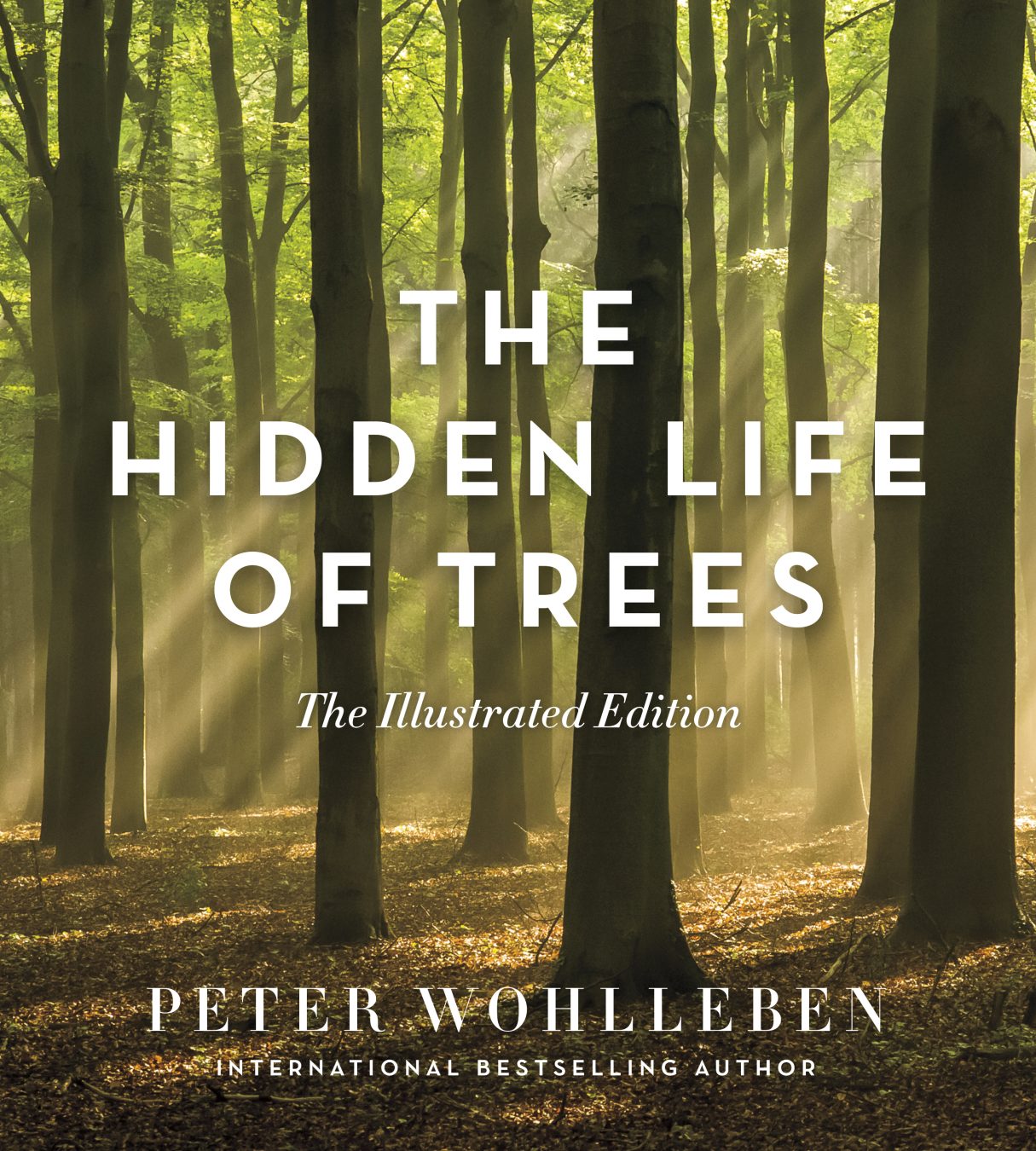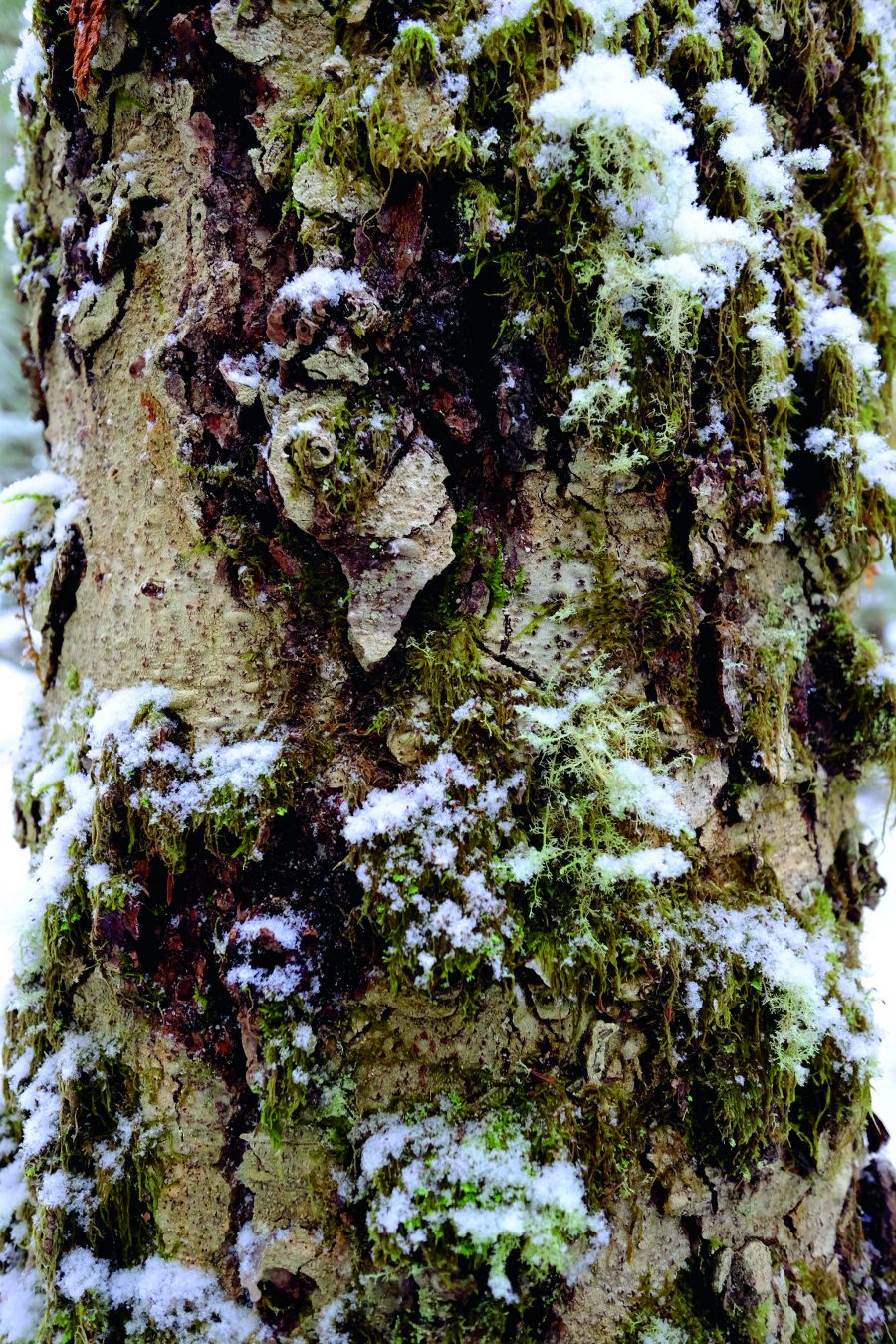The following is excerpted from “The Hidden Life of Trees: The Illustrated Edition” by Peter Wohlleben, translated by Jane Billinghurst (August 2018, Greystone Books). Reproduced with permission from the publisher.
Tree Talk
According to the dictionary definition, language is what people use when we talk to each other. Looked at this way, we are the only beings who can use language, because the concept is limited to our species. But wouldn’t it be interesting to know whether trees can also talk to each other? But how? They definitely don’t produce sounds, so there’s nothing we can hear. Trees, it turns out, have a completely different way of communicating: they use scent. Scent as a means of communication? The concept is not totally unfamiliar to us. Why else would we use deodorants and perfumes? And even when we’re not using these products, our own smell says something to other people, and scientists believe pheromones in sweat are a decisive factor when we choose our partners. So it seems fair to say that we possess a secret language of scent, and trees have demonstrated that they do as well.
Thanks to your sense of smell, you’ve probably picked up on many feel-good messages sent out by trees. I am referring to the pleasantly perfumed invitations broadcast by blossoms. Blossoms do not release scent at random or to please us. Fruit trees, willows, and chestnuts use their olfactory missives to draw attention to themselves and invite passing bees to drop by for a feast. Sweet nectar, a sugar-rich liquid, is the reward the insects get in exchange for the incidental dusting they receive while they visit. The form and color of blossoms are signals, as well. They act somewhat like a billboard that stands out against the general green of the tree canopy and points the way to a snack.
But there is much more to trees’ scent communication than that. In the 1970s, scientists noticed something on the African savannah. The giraffes there were feeding on umbrella thorn acacias, and the trees didn’t like this one bit. It took the acacias mere minutes to start pumping toxic substances into their leaves to rid themselves of the large herbivores. The giraffes got the message and moved on to other trees in the vicinity. But did they move on to trees close by? No, for the time being, they walked right by a few trees and resumed their meal only when they had moved about 100 yards away.
The reason for this behavior is astonishing. The acacia trees that were being eaten gave off a warning gas that signaled to neighboring trees of the same species that a crisis was at hand. Right away, all the forewarned trees also pumped toxins into their leaves to prepare themselves. The giraffes were wise to this game and therefore moved farther away to a part of the savannah where they could find trees that were oblivious to what was going on. Or else they moved upwind. For the scent messages were carried to nearby trees on the breeze, and if the animals walked upwind, they could find acacias close by that had no idea the giraffes were there.
Similar processes are at work in our forests. Beeches, spruce, and oaks all register pain as soon as some creature starts nibbling on them. When a caterpillar takes a hearty bite out of a leaf, the tissue around the site of the damage changes. Oaks, for example, carry bitter, toxic tannins in their bark and leaves. These either kill chewing insects outright or at least affect the leaves’ taste to such an extent that instead of being deliciously crunchy, they become biliously bitter. Willows produce the defensive compound salicylic acid, which works in much the same way. Leaf tissue also sends out electrical signals, just as human tissue does when it is hurt. However, the plant signal travels so slowly that if a tree wants to warn distant parts of its own structure that danger lurks, it can cover long distances much more quickly by releasing chemical compounds into the air.
And trees do not only mount their own defense; they can also use scent compounds to summon help. And not just any old scent compounds, but compounds that are specifically formulated for the task at hand. Because the saliva of each species of insect is different, a tree can match the saliva to the insect and accurately identify which of the bad guys it is up against. The match can be so precise that a tree can broadcast alarms that summon specific beneficial predators to devour the pests that are bothering it.
Trees don’t rely exclusively on aerial defense systems, for if they did, some neighbors would not get wind of the danger. Dr. Suzanne Simard of the University of British Columbia in Vancouver has discovered that they also warn each other using chemical signals sent through the fungal networks around their root tips, which operate no matter what the weather. Surprisingly, news bulletins are sent via the roots by means of not only chemical compounds but also electrical impulses that travel from a form of nerve cell at the tips of the roots at the speed of a third of an inch per second. In comparison with our bodies, it is, admittedly, extremely slow. However, there are species in the animal kingdom, such as jellyfish and worms, whose nervous systems conduct impulses at a similar speed. Once the latest news has been broadcast, all the trees in the area promptly pump defensive compounds through their veins.











